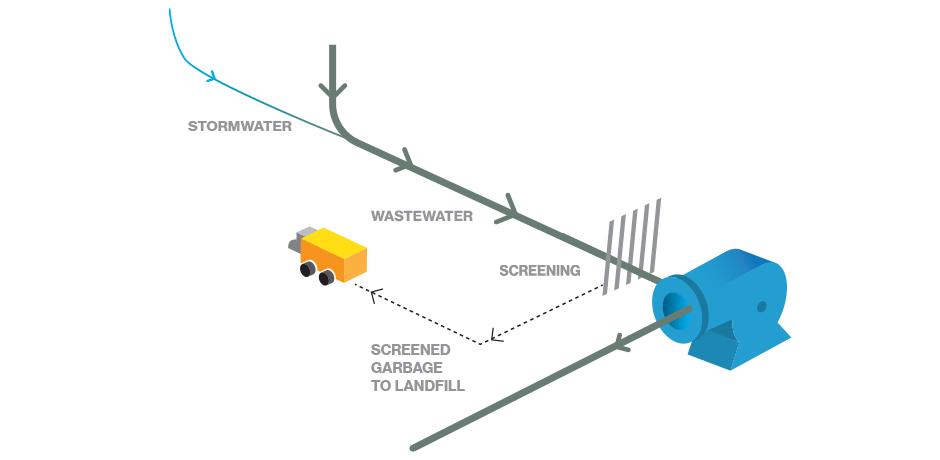Economical Solutions for Large-Scale Waste Water Treatment Facilities
Economical Solutions for Large-Scale Waste Water Treatment Facilities
Blog Article
Strategic Approaches to Improve Drainage Treatment Performance and Minimize Environmental Influence
In the realm of waste water treatment, the mission for boosted performance and lowered environmental effect is a continuous challenge that requires strategic services. As society comes to grips with the important to handle water sources sustainably, a nuanced approach ends up being crucial. The integration of advanced therapy technologies, energy-efficient processes, resource healing approaches, improved nutrient removal techniques, and clever tracking and control systems represents a complex framework for dealing with these pressing concerns. Nonetheless, what exists at the core of this facility internet of methods is the prospective to reinvent the method we approach drainage therapy, not equally as a process of disposal, but as an important opportunity for innovation and ecological stewardship.
Advanced Treatment Technologies
Cutting-edge membrane filtering systems have reinvented sophisticated wastewater therapy procedures, significantly enhancing the removal of pollutants. This innovation has verified to be very reliable in eliminating a large variety of impurities, consisting of drugs, heavy steels, and organic compounds, which are usually testing to remove with standard treatment methods.
Additionally, membrane filtration systems provide numerous benefits over conventional therapy methods. Additionally, these systems are extremely versatile and can be quickly incorporated right into existing treatment plants or made use of as standalone units for decentralized applications.
Energy-Efficient Procedures
The assimilation of energy-efficient processes in wastewater treatment systems is essential for enhancing source application and lowering operational costs. One essential technique to boosting power performance in wastewater therapy is the utilization of advanced aeration systems, such as fine bubble diffusers or surface aerators, which can improve oxygen transfer effectiveness and minimize energy usage.
In addition, maximizing procedure control and automation via the use of advanced sensors and keeping track of systems can improve general energy efficiency by adjusting operations in real-time based on real need and problems. Applying power audits and consistently monitoring energy efficiency indications are crucial practices to determine areas for improvement and track energy-saving initiatives effectively. In general, the adoption of energy-efficient processes in wastewater treatment not only benefits the atmosphere but likewise adds to long-lasting expense financial savings and operational sustainability.
Resource Recovery Techniques
With a concentrate on enhancing source use and sustainability in wastewater therapy systems, the application of resource recovery approaches arises as an essential aspect in boosting functional performance. Source recovery techniques in wastewater treatment involve the identification and removal of useful resources from the waste stream, therefore transforming what was once taken into consideration waste into an important property. By carrying out resource recuperation techniques such as nutrient elimination and recovery, power generation from organic issue, and the production of multiple-use water, wastewater treatment plants More about the author can minimize ecological effect while maximizing performance.

Boosted Nutrient Elimination Methods
Carrying out sophisticated nutrient removal methods is necessary for enhancing the performance of wastewater therapy systems. Boosted nutrient elimination plays an essential role in lessening the environmental impact of treated effluent released into water bodies. Among the vital strategies utilized for boosted nutrient removal is the procedure of biological nutrient removal (BNR), which involves the elimination of nitrogen and phosphorus with biological processes. This can be accomplished via the use of specialized microbes that can convert nitrogen compounds right into inert nitrogen gas through denitrification, and build up phosphorus within their cells via a procedure called boosted organic phosphorus removal (EBPR)

In enhancement to BNR, advanced treatment methods such as membrane layer bioreactors (MBRs) and created wetlands can likewise be used to boost nutrient removal effectiveness. MBRs use membrane layers to achieve top notch effluent criteria by efficiently eliminating nutrients and put on hold solids. Created marshes mimic natural wetland processes to eliminate nutrients via plant uptake, microbial task, and sedimentation. By incorporating these advanced nutrient removal techniques into wastewater treatment systems, municipalities and industries can properly lower nutrient pollution and safeguard the atmosphere.
Smart Tracking and Control Systems
Utilizing advanced technology, the integration of clever surveillance and control systems changes the functional effectiveness of wastewater therapy facilities. These systems integrate advanced sensing units and data analytics to continuously check crucial specifications such as pH degrees, turbidity, dissolved oxygen, and flow prices in real-time. By gathering and analyzing this information, operators can obtain important understandings into the efficiency of the treatment procedures, enabling aggressive modifications to optimize therapy efficiency.
Smart surveillance and control systems also sustain remote surveillance abilities, permitting operators to accessibility real-time data and control features from off-site locations. This remote accessibility improves functional versatility and responsiveness, making it possible for quick treatments in click here for info situation of system malfunctions or variations in influent high quality. Additionally, the anticipating upkeep capabilities of these systems aid stop tools failings and minimize downtime, inevitably improving the overall dependability of wastewater therapy operations (Waste Water Treatment).
Conclusion
In conclusion, calculated approaches such as innovative treatment modern technologies, energy-efficient processes, source recovery techniques, improved nutrient elimination techniques, and wise surveillance and control systems play an essential function in boosting wastewater treatment performance and decreasing environmental effect. By carrying out these strategies, wastewater therapy plants can improve their general performance, minimize power consumption, recover important sources, and make certain conformity with environmental regulations. These strategies are essential for reliable and sustainable wastewater management techniques.

In verdict, tactical strategies such as sophisticated therapy technologies, energy-efficient procedures, resource my explanation healing strategies, boosted nutrient removal methods, and smart surveillance and control systems play a vital function in boosting wastewater therapy efficiency and decreasing environmental effect.
Report this page